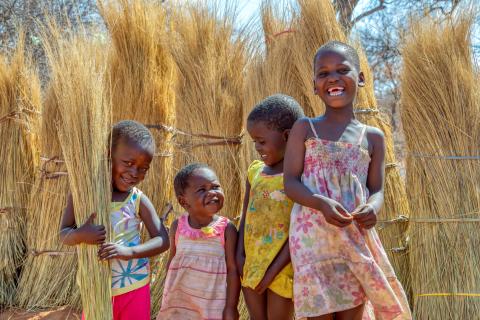2023 Joint Malnutrition Estimates
This is a summary of the following report: UNICEF, WHO and the World Bank (2023) Levels and trends in child malnutrition. https://data.unicef.org/resources/jme-report-2023/?utm_id=JME-2023
Every two years, joint estimates for child malnutrition (aged under five years) are updated to provide a more accurate picture of the magnitude of child malnutrition globally. The headline figures for 2023 – 148 million stunted, 45 million wasted, and 37 million overweight – indicate that not enough progress has been made on the global level.
Just one-third of countries are projected to halve the number of stunted children – as per the 2030 Sustainable Development Goals – and only one in every six countries is on track to meet the 3% prevalence of overweight targets. Globally, wasting prevalence is at 6.8%, which has changed little since 2000 (8.7%). Stunting progress has been more promising, with a 10.7% reduction in the same timeframe (down from 33.0% to 22.3%). However, stunting progress is tailing off, so efforts are needed to accelerate progress. Since 2000, overweight prevalence has steadily increased year on year.
Almost all stunted children reside in Asia (52%) and Africa (43%), although some countries in South and Central America and Oceania have ‘high’ or ‘very high’ prevalence. Although many regions are off track based on 2012–2022 trends, most are still making progress. Nonetheless, stunting prevalence is worsening in Melanesia (+3.1%) and has largely stalled in Middle Africa (-0.5%) and Southern Africa (-0.6%). Significant progress has been made in Southern Asia (-9.8%) and Eastern Africa (-8%) in particular, but stunting prevalence remains unacceptably high (30.5% and 30.6%, respectively). This highlights that stunting rates can improve given the right policies, but that more effort is required.
Wasting prevalence varies widely within regions, but Asia and Africa are the continents with the most numerous ‘high’ prevalence countries (>10%). Around 32 million and 12 million wasted children reside in Asia and Africa, respectively, with Latin America and the Caribbean and Oceania (around 1 million) making up most of the rest. A total of 25.1 million wasted children live in Southern Asia – far exceeding any other region.
”œOnly 25% of children under five live in Southern Asia, but this sub-region is home to more than half of all children with wasting.”
By contrast, the prevalence of overweight children has declined in low-income countries (-1.7%), remained stable in lower-middle-income countries (+0.3%), and increased in upper-middle- (+1.6%) and high-income countries (+1.6%) since 2000. Australia and New Zealand (+6.9%) and Melanesia (+4.8%) showed the greatest increases in childhood overweight between 2012 and 2022.
There are data gaps in some regions that make it difficult to accurately assess progress toward global targets – particularly for wasting (Box 1). Yet current trends indicate that stunting reduction targets will be missed by some 39.6 million children. Over 80% of these ‘missed’ children are living in Africa.
Box 1: MethodologyThe key dissemination materials for the 2023 edition include global, regional, and country trends from 2000–2022 for stunting and overweight. For wasting and severe wasting, country estimates are based on available primary data sources (e.g., household surveys), while global trends are presented for 2000–2022 and the regional estimates show the latest estimates (2022). Country progress assessments toward the 20230 targets are aggregated into regional summaries and included. |


